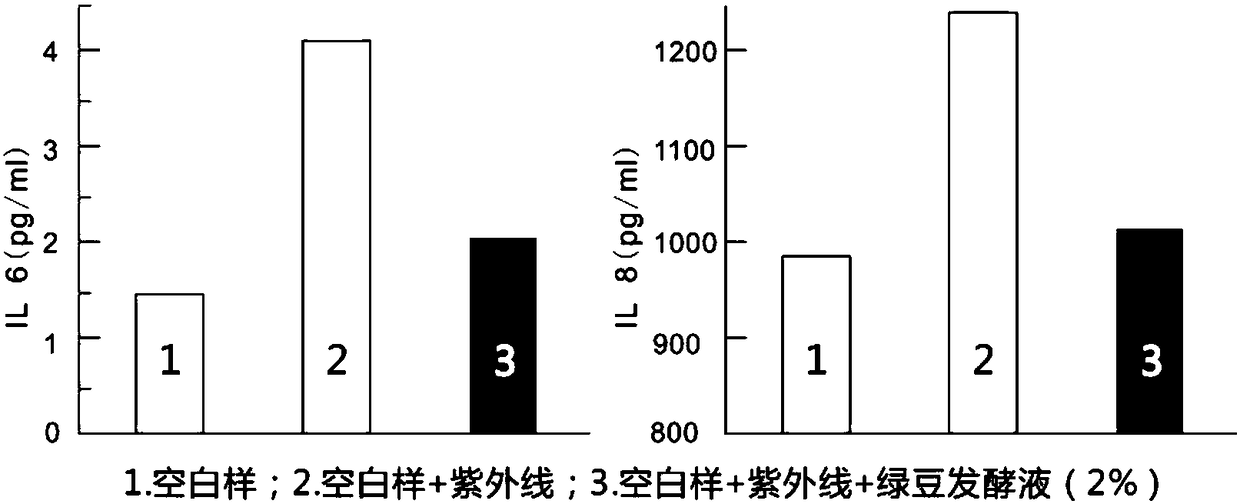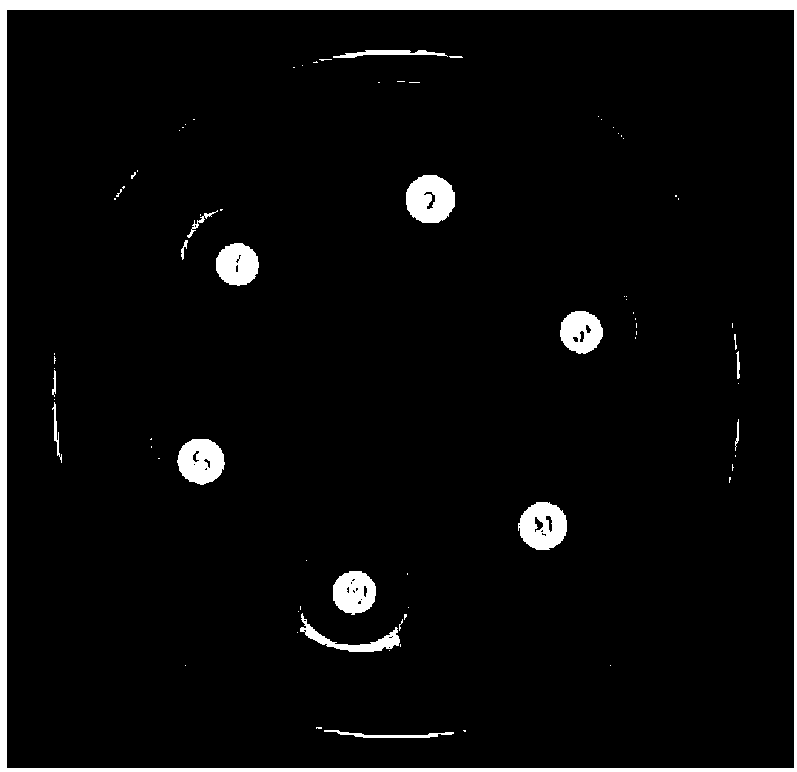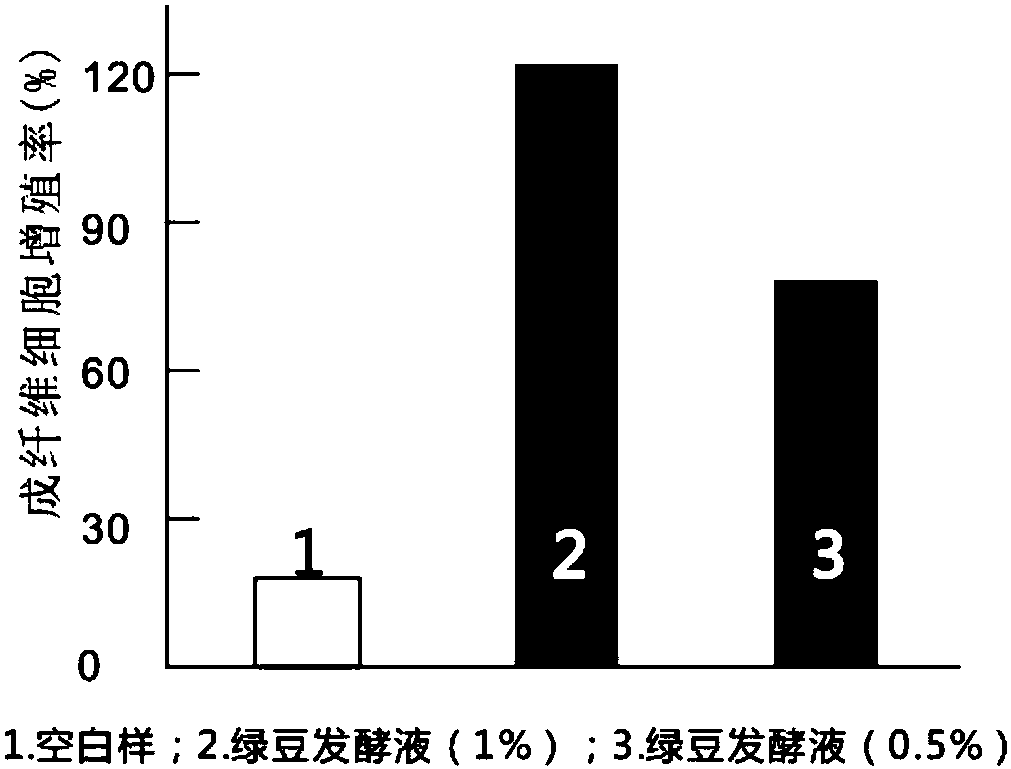Mung bean fermentation broth capable of repairing damaged skin surface lipid films and soothing skin allergy, and preparation method thereof
A technology for skin allergies and fermented liquid, applied in skin care preparations, medical preparations containing active ingredients, skin diseases, etc., can solve the problems of difficult removal of organic chemicals and low extraction efficiency, and achieve high dissolution rate and extraction Mild conditions and good stability
- Summary
- Abstract
- Description
- Claims
- Application Information
AI Technical Summary
Problems solved by technology
Method used
Image
Examples
Embodiment 1
[0038] Embodiment 1, anti-inflammatory effect test (24 hours suppress interleukin): as figure 1Shown is the biological equivalent test chart. The biological equivalent test shows that 2.0% mung bean lactic acid bacteria fermentation liquid can inhibit the inflammatory factor (interleukin-6) that causes excessive proliferation of keratinocytes by 85%; the inflammatory factor that causes redness (Interleukin-8), the inhibition is as high as 90%;
Embodiment 2
[0039] Embodiment two: Inhibition of hyaluronidase activity embodiment
[0040] Hyaluronidase is a participant in allergic reactions. Studies have shown that hyaluronidase has a strong correlation with inflammation and allergic reactions. The method of in vitro inhibition of hyaluronidase (Elson-Morgan) is used, as shown in the table below: Test results As shown in the display, with 2.0% dipotassium glycyrrhizinate as the positive control, sample I (solid content 5.0%), when taking its 2.0%, the inhibition rate is about higher than that of the positive control, which can reach 95%. Sample I (solid content 5.0%) .
[0041]
[0042] The data shows that through the test of inhibiting hyaluronidase activity, the anti-allergic effect of anti-allergic antibiotics is comparable to that of dipotassium glycyrrhizinate, or even more significant.
Embodiment 3
[0043] Embodiment three: RBC hemolysis embodiment
[0044] Fresh bovine blood was used to make red blood cells (RBC), so as to measure the hemolysis rate of the raw material itself and the hemolysis inhibition rate against SDS; the results of the examples are as follows:
[0045] 1) The results of the anti-allergicin autolysis control group: the 5.0% (mass percent) anti-allergicin aqueous solution in the system did not cause hemolysis of red blood cells, which proves that this raw material does not cause significant autolysis of red blood cells, indicating that this raw material No apparent irritant by itself.
[0046] 2) The inhibitory rate of antiallergicin on red blood cells damaged by SDS, adding 2.0% (mass percentage)) antiallergicin in the system The results of the examples show that the inhibition rate reaches 46.7%, which proves that the antiallergicin effectively reduces The damage of SDS to red blood cells can be judged as significantly reducing the potential irrita...
PUM
 Login to View More
Login to View More Abstract
Description
Claims
Application Information
 Login to View More
Login to View More - R&D
- Intellectual Property
- Life Sciences
- Materials
- Tech Scout
- Unparalleled Data Quality
- Higher Quality Content
- 60% Fewer Hallucinations
Browse by: Latest US Patents, China's latest patents, Technical Efficacy Thesaurus, Application Domain, Technology Topic, Popular Technical Reports.
© 2025 PatSnap. All rights reserved.Legal|Privacy policy|Modern Slavery Act Transparency Statement|Sitemap|About US| Contact US: help@patsnap.com



